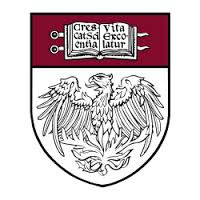Early Application advantage continues for the Ivy leage and for elite private schools. The big trend for admissions to the class of 2024 for Ivy and Ivy League proxies: a drop in total applications and an increase in admissions rates. This was a marginal dip rather than a sea change, but with increases in applications and a decrease in admissions rates over most years in the last two decades, this is good news for you applicants to the Big Name Elite Colleges.
I include a table with all Ivy League results below, compared to two popular options for many Ivy League applicants–M.I.T. for you tech folks (yes, I know, they do more than STEM. But still). I also include Duke, and a look at Stanford last year-though I deal with Stanford after the data table, looking at the data we do have at this point.
This year, college application results remain a tale of data in flux even in June, as colleges respond to the C-Factor (the Covid epidemic). Covid appears to be boosting acceptance rates as colleges face more deferrals (gap year) and more students who decided to stay closer to home. Many families and students seem to be having second thoughts about paying Ivy-league level tuition for what may be a virtual or hybrid education in 2020-21.
The data I use below is mainly from mid-March, 2020 on. In addition to looking at data, you’d be wise to also know a bit about how college applications are actually evaluated. To do so, see my classic post, The Secret of College Admissions: How College Applications are Evaluated. I will be updating this for 2020 in the coming weeks, due to the major changes in use of SAT/ACT tests–I posted on this recently, and add that the University of Southern California has not also joined those schools making tests optional. This makes essays and exracurricularls even more important. See here for more on that: More Colleges Will Be Dropping the SAT Requirement.
Early vs. Regular Application Data for the Class of 2024
| School | Early App Accept Rate | Regular App Accept Rate | Overall Accept Rate | Early Application Total/Accepted | Regular Application Total/Accepted | Total Apps | |
| Brown (ED) | 17.5% | 5.3% | 6.8% | 4,562/800 | 32,232/1,733 | 36,794 | |
| Columbia* (ED) | N/A– | N/A | 5% (2019) | N/A | 42,569/2,245 (2019) | ||
| Cornell (ED) | 23.8% | 2020: N/A (2019: | 2020: N/A 2019: | 6,615/1,576 | 2020: N/A 2019: | ||
| Dartmouth (ED) | 25.4% | 6.8% | 8.8% | 2,069/526 (547 w QBR*) | 19,865/1355 | ||
| Harvard (R EA) | 13.9% | 3.2% | 4.9% | 6,424/895 | 33,824/1,085 | ||
| U Penn (ED) | 19% | 5.9% | 8% | 6,543/1,269 | 35,662/2135 | ||
| Princeton (EA/SC) | N/A | N/A | 5.55% | N/A/791 | N/A/1,032 Ttl all apps: 32,836 | ||
| Yale (EA) | 13.7% | 5.1% | 6.54% | 5,777/794 (881 w QBR*) | 29,443/1,510 (/1,597 w/ early QBR; ca. 200 QBR ttl) | ||
| M.I.T. (EA) | 7.4% | 7.1% | 7.25% | 9,291/687 | 10,784/770 | ||
| Duke (ED) | 20.9% | 5.9% | 7.7% | 3,531/741 | 36,252/2170 |
*QBR is my abbreviation for Questbridge, a national admissions program for financially disadvantaged students; some schools aggregate QBR data in their numbers; others, like Dartmouth, separate Questbridge apps. This can skew data slightly but not enough to change your basic takeaway, and where there is Questbridge data that is not aggregated, I show that, above.
Also, as noted, more schools than usual are not releasing a full data set (yet). Some are typically unforthcoming when it comes to data; as an example, Columbia is consistently chary with data (e.g. they tend not to release early application data). As for others–Cornell released early application but will not release full data until fall
Your Takeaway #1: Early Application offers an Increased Chance of Admission
When it comes to the data on applications, the lesson is consistent for years: that early application advantage continues. On average, the percentage of people admitted through early admissions is more than double that of regular admissions, in a number of cases nearly tripling the chance of admissions. Of course, this most often comes with Early Decision admits, which means you have to accept whatever financial package you are offered. This can be a big disadvantage for those of you from solidly middle class and working class backgrounds.
If you are not clear on the different early application options, please have a look at this link to my business portal: Application Jargon and What It Means
Stanford Data and Final Thoughts on the Data and on Early Admissions
Want to compare Stanford data? Good luck! Several years ago, Stanford stopped publishing early application data, at all, and delayed publishing data on the overall application results until after the full cycle was over–in other words, roughly around the holidays, months after those admitted showed up on campus. For the record. Stanford’s Common Data set shows a 4.34% overall admissions rate for fall of 2019, with 2,062 offered a seat out of 47,498 applications.
I notice that my data differs signifcantly from that provided by some of my peers/competitors. Some of this is due to dat in flux due to Covid and other factors. Numbers are changing and will be changing marginally into the fall, as all of the schools discussed in this post are busy extending additional offers from their wait lists due to deferals and declines. In one example, Brown’s regular acceptance rate was 6.8%, which I published in my chart, above, but a new number out as of June states at 6.9%. This is marginal, but that tenth of a percent means a big life change for some students who suddenly found themselves admitted. Nevertheless, when I pinged Brown for information, I could not get raw numbers, so while they may be trending upward due to as yet unquantified new admits, I am keeping the data as is in my chart.
The real questions for you are clear in the existing data, and the biggest question is whether you are interested enough in one of these private colleges to put your chips on an early application. Note that this requires a broader strategy, as a few schools allow multiple earlies, e.g., you could apply to M.I.T. and to Cal Tech as early apps. But most earlies are restricted, with the ED the most restricted of all . . .
Forunately, you have months to think about it.


